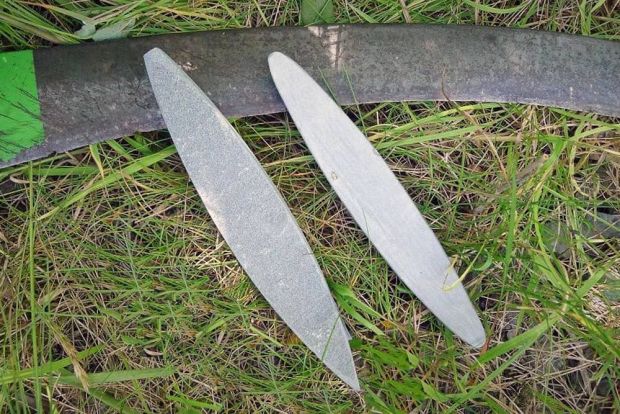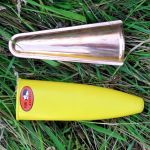We use cookies to make your experience better. To comply with the new e-Privacy directive, we need to ask for your consent to set the cookies. Learn more.
Natural Sharpening Stones
Price From
€18.95
These Natural Scythe Sharpening Stones are made in Europe from natural stone. These medium and fine stones are excellent for keeping your scythe blade sharp. More details below
Natural Sharpening Stones
Medium Sharpening Stone
- Mailänder scythe sharpening stone.
- A natural canoe shaped stone cut from a quarry near Milan.
- About 400 grit with a high carborundum content
- 23 - 24cm length
- Polished on three sides but left unfinished upon the fourth
- Unfinished side can be used upon larger or curved blades and agricultural tools.
- Lubricate with water.
Extra Fine Sharpening Stone
- Hand-quarried near Rozsutec Mountain in Slovakia
- Extra fine is for the more experienced scythe mowers, this stone has a very fine grain between 600-800grit.
- The beautifully finished, very fine and fairly hard Rozsutec whetstone. Finished on all 4 sides.
- Once you learn how to really use a whetstone, it creates a very polished edge. However, you will have to stop and hone more often, when you're out mowing.
- Best for well-peened grass blade edges.
You will need one good stone, the medium stone is perfect for sharpening scythes while mowing in the field.
- The bevel is on the uppermost side of the blade, so that the blade bites downwards into the stem of the grass, (rather than upwards which would give the grass more of an opportunity to bend away from the blade).
- The bevel on the upper side of the blade is very slightly greater than the angle created when your curved scythe stone rubs both against the sharp edge and the back rib of the blade. In other words if the end of your stone is rattling against the rib when you sharpen, this is OK, and means you have almost the right angle and are merely inflicting very marginal wear on your stone.
- The underside of the blade is basically flat (though rounded), and the object is to remove the burr created when you sharpened the top side.
- Strokes should be outward, with the stone moving in the direction in which the blade cuts. Strokes should start at the handle end of the blade and progress towards the tip.
- The most normal stance for sharpening is to hold the scythe upside down, with the top of the snath on the ground and the blade pointing outward and away from you towards the right, at an angle of about 45 degrees when viewed from above.
Write Your Own Review


